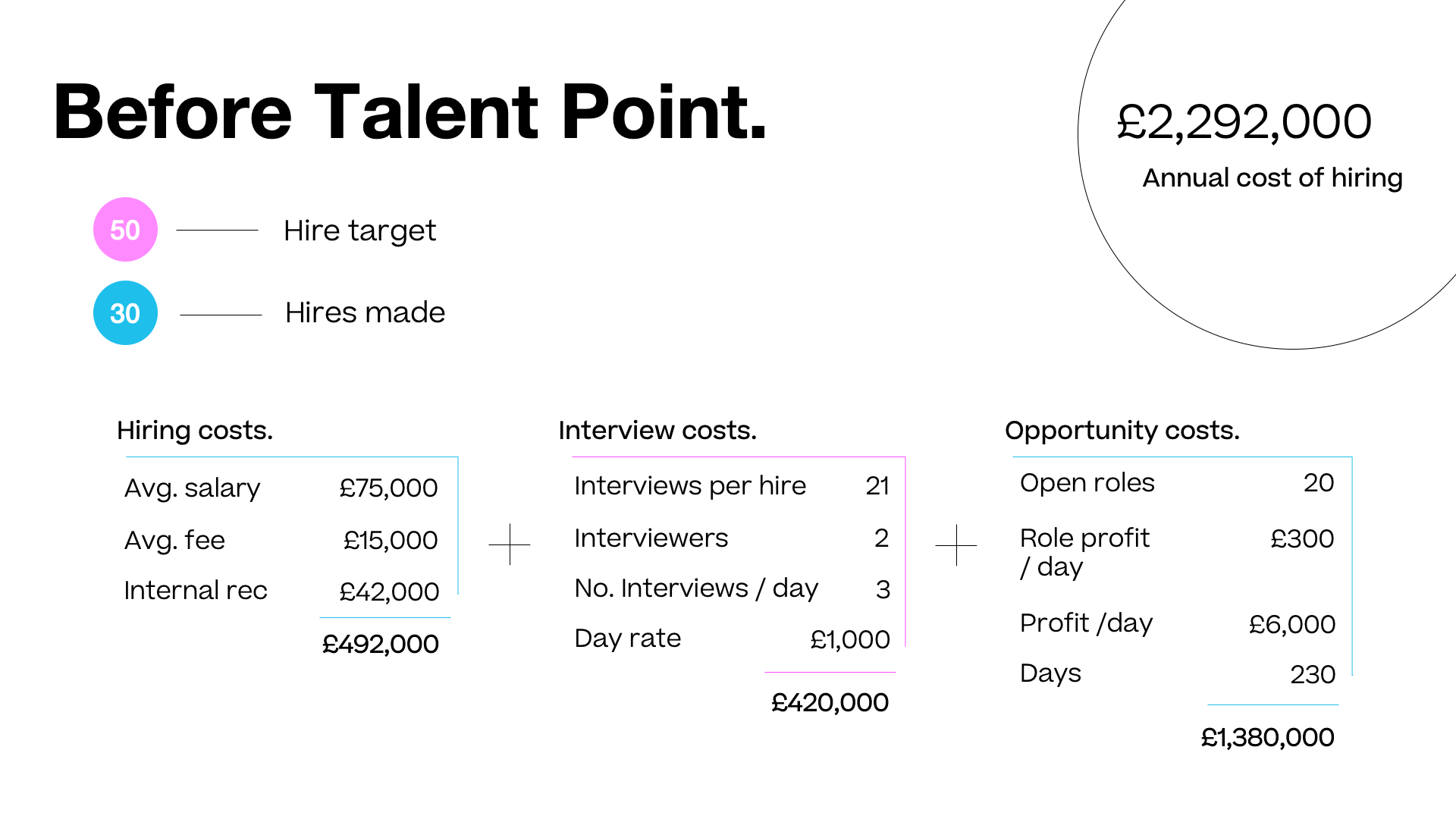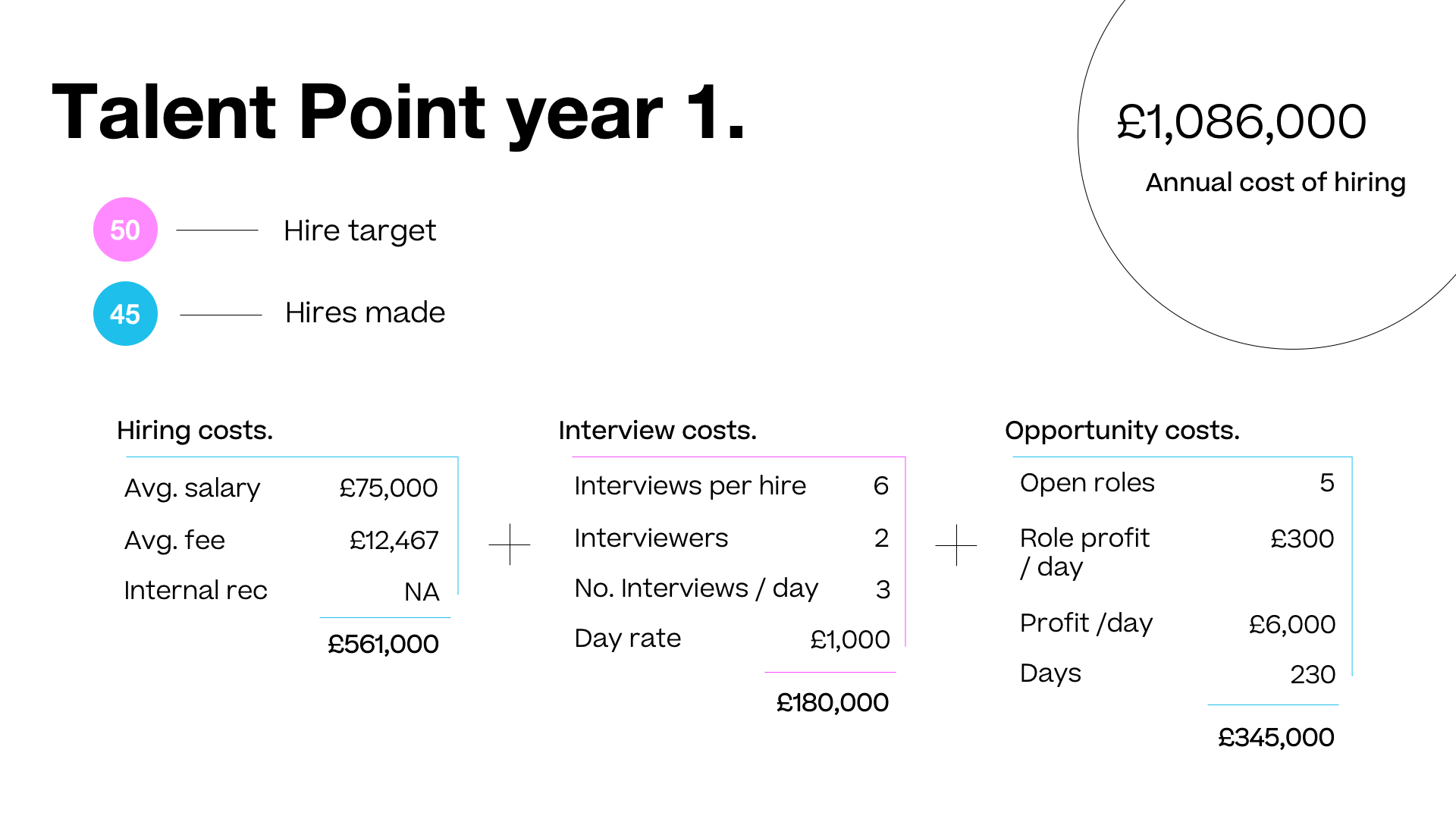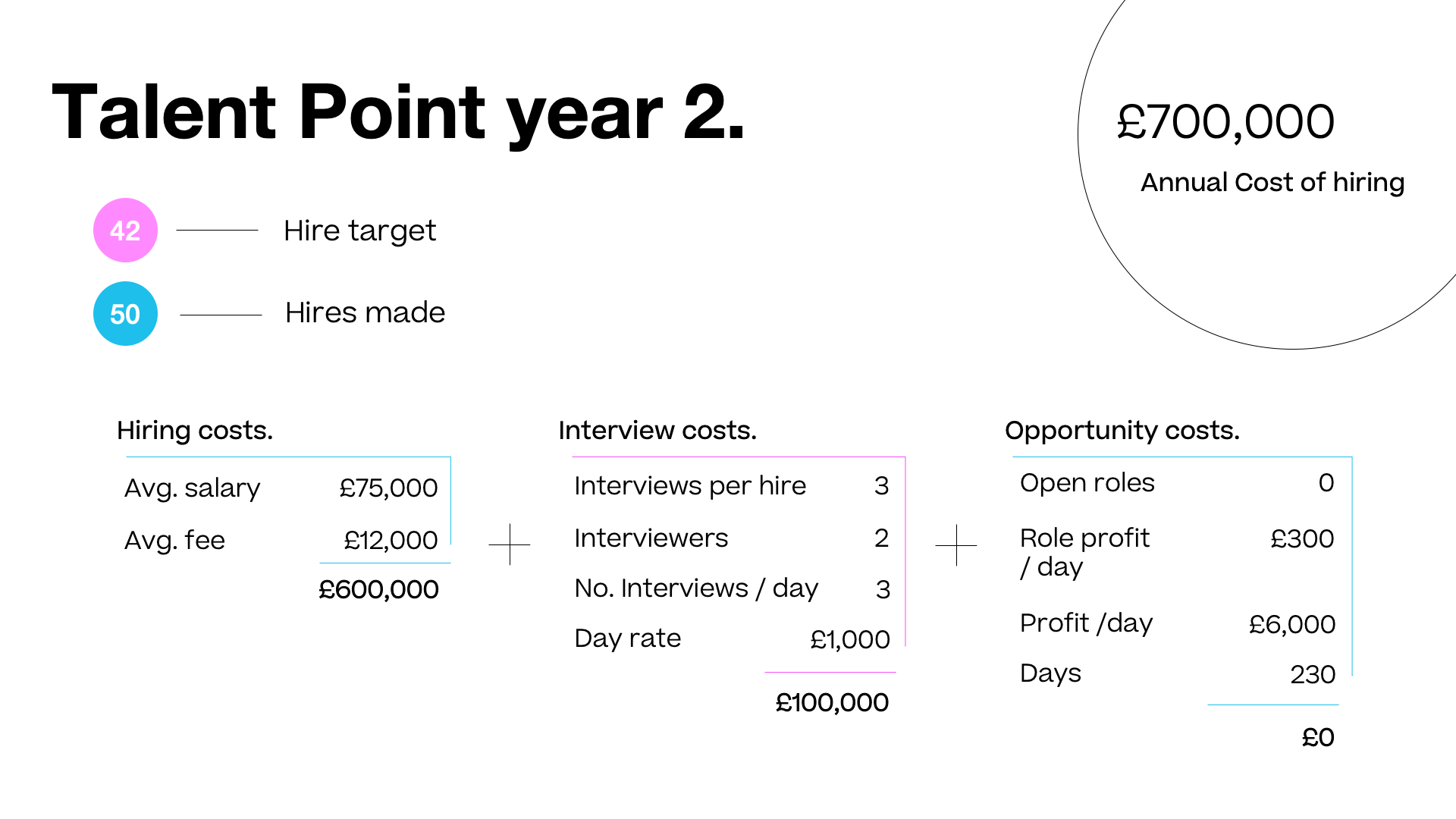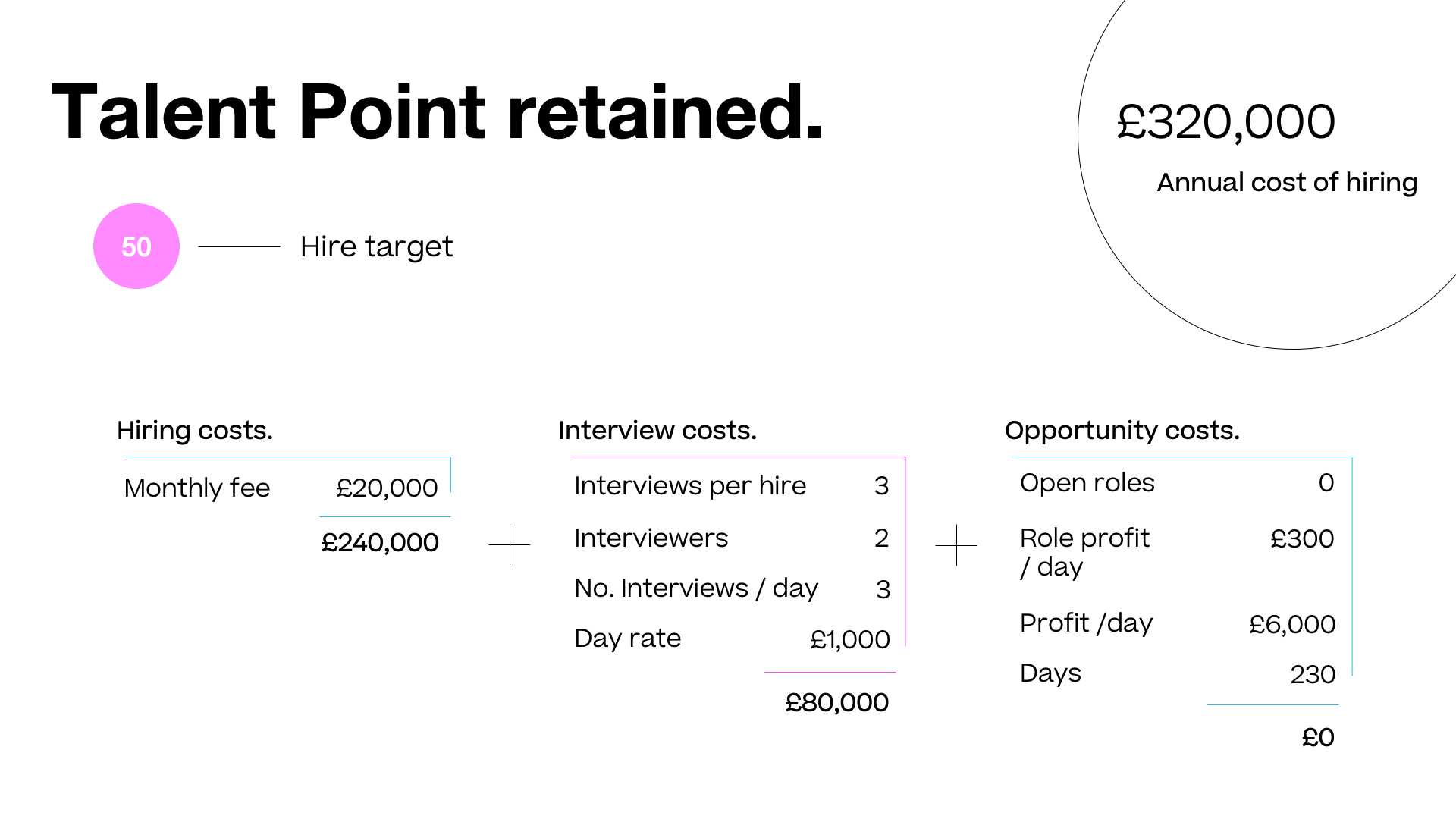According to a CB insights report exploring the reasons 101 startups failed, 23% were down to ‘not hiring the right team’. Figures supported by a recent Talent Point poll.
Now, if you consider the fact that $9.7billion was invested in London in 2019, that means that an inability to hire and retain staff cost venture capital businesses a whopping $2.2billion in London alone.
Those are big numbers, and it’s a shame to see that money wasted.
Now, we’re not in the game of telling investors how to do due diligence. But we are in the business of talent consultancy and we do know hiring and retention.
Drawing on years of experience taking a data-driven approach to talent, we’ve identified cost-savings and ensured quality of hire for multiple technology-driven companies.
A significant percentage of our business comes from our relationships with private equity houses and venture capitalists who have understood that our approach to talent consultancy is the way to realise the true value of their investments.
What is the true cost of hiring?
This is something that we are educating our clients on.
It is easy to remain fixated on recruitment fees; the salaries of in-house team; and the ‘stuff’ that we know about when it comes to salaries, pensions and NI contributions.
But this is only part of the reality. Many companies do not take into account hours wasted reviewing CVs and interviewing; advertising costs to get those applications; the impact and cost of a bad hire; or the opportunity cost of not having someone onboard whilst recruiting a position.
So what does that actually look like?
Let’s examine the before, year one and year two breakdown of how we helped a software consultancy in London reduce their total cost of hiring from £2,292,000 to £700,000 whist increasing numbers hired by 50%.
We've chosen this example as the business model of a consultancy (1 hire = 1 consistent increase/decrease in revenue) makes it easier to illustrate and understand.

As you can see, although they were spending a lot on agency fees and one internal recruiter (£492,000), this number was almost matched by lost revenue due to staff being in interviews (£420,000) and dwarfed by lost opportunity cost of not making hires and therefore having less ‘billable consultants’ to work on paid projects (£1,380,000).
Anyone looking at this knew change was needed. Here is what it looked like after one year with Talent Point.

Now I know what you’re going to say, ‘they’re spending more with you ‘ – you’d be right. But when considering the total cost incurred or missed revenue opportunity having too many interviews or not enough hires being made, the saving is significant.
Primarily by using experience and data to realign roles with what the market can actually provide (skills vs salary vs motivations), we were able to bring down their interview-to-hire ratio from 21 to 6 – saving £240,000.
With that extra free time we were able to get much closer to their yearly hire target of 50, reducing the revenue missed from not making hires by £1,035,000.
But we knew more could be done. Here is the picture at the end of year two:

We took the strategic decision with our partner to double down on quality. This meant dedicated resources to get hiring to the next level – such as interview training – and it paid off. We successfully halved interview-to-hire ratio again to 3-to-1 and broke the yearly hiring target.
That’s £1,532,000 in the bank after two years by wasting seven times less time at interview and ensuring growth in staff kept pace with growth in the business opportunity.
Companies always want to progress though, and £700,000 is still a lot of money. Below is how we proposed saving a further £380,000 per year to bring their true cost of hiring down to £320,000.

There are many more important factors we can – and do – look at with our customers such as retention.
Hopefully this example illustrates at a high-level what we mean by the true cost of hiring and what can be achieved when you invest in a long-term strategy for talent.
So, how can you save costs on hiring?
It may sound strange but, by paying more.
At least in the short term.
Taking the time to invest in an end-to-end talent solution creates a culture of accountability which is led by data.
It allows you to identify areas of weakness, areas to maximise investment opportunities and ultimately allows companies to hit their financial targets quicker than taking a “traditional” approach.
To realise and maximise investments in talent, you need to start at the beginning.
How are job descriptions being defined? What career paths and opportunity are you providing to potential hires? Are these in line with the ‘market’? What are you competitors doing? And so on.
Looking at all of this and then moving into creating tailored job descriptions, targeted attraction campaigns (including leveraging your employer brand) and retention strategies means that you will see that the biggest cost for most companies, the people, will come down so that the profit figures can start rising quicker.
So, whether you are looking to invest in a business or you're taking outside investment, looking at the true cost of hiring should be high on your agenda. After all, there are quick wins and long-term gains to be made from moving away from what’s always been done.
Our experience of working alongside and advising founders, private equity and venture capitalists in this space can’t be matched. We can say that because we committed to this way of talent consultancy before many others. And we’ve got the proven success that can help drive your investment.
To find out more about how we can help ensure you get the best possible ROI get in touch with us below or email our CEO Simon at simon.mortimer@talentpoint.co.


